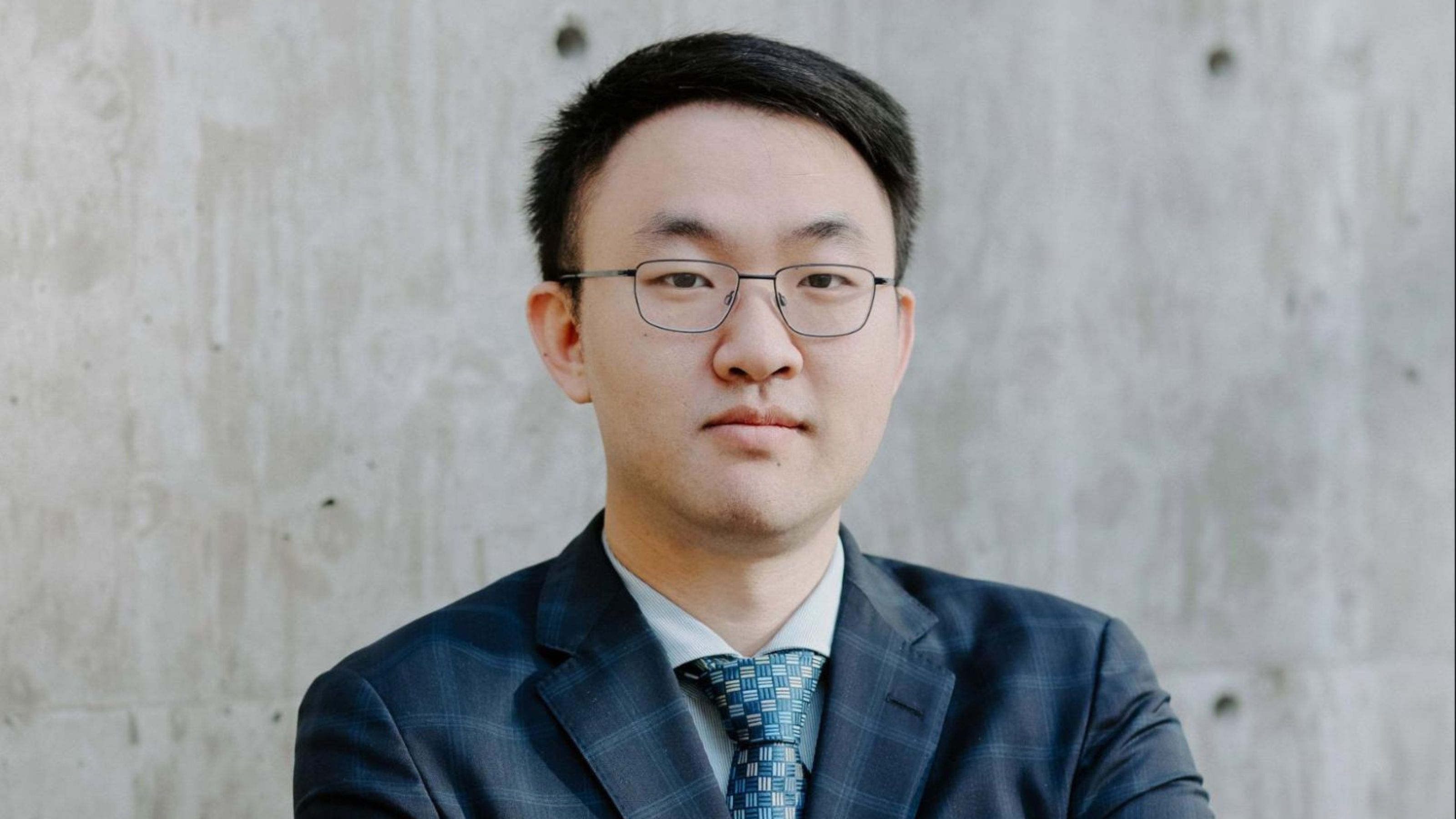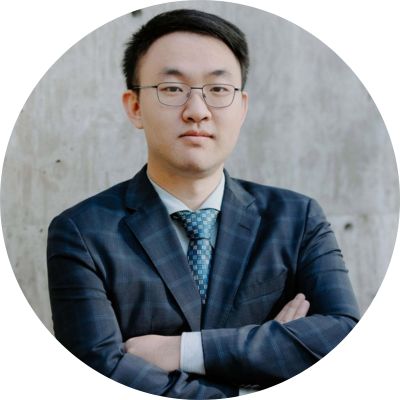In this week’s Innovator Spotlight, Qipei (Gavin) Mei, assistant professor in the Department of Civil and Environmental Engineering at the University of Alberta, discusses his research combining civil engineering and AI to enhance productivity and reduce costs in design, construction and maintenance of infrastructure and buildings. Qipei envisions a future where civil engineering and AI work together to support infrastructure planning and housing affordability while mitigating issues like labor shortages and rising material costs.
Innovator Spotlight: Qipei (Gavin) Mei
May 23, 2024

Qipei (Gavin) Mei, assistant professor in the Department of Civil and Environmental Engineering at the University of Alberta.
How do you describe your work to people who don’t work in your field?
Civil engineering, a field with a history spanning thousands of years, has evolved alongside human civilization as we constructed buildings, bridges and roads. Despite technological advancements, significant challenges remain, such as housing shortages, infrastructure vulnerabilities due to climate change, high accident rates and low productivity in the still labor-intensive construction sector.
In contrast to civil engineering’s long history, artificial intelligence (AI) is a relatively young field (spanning several decades instead of thousands of years), yet it has already shown significant promise in addressing various complex issues across different sectors in recent years.
AI is revolutionizing the field of civil engineering by enhancing productivity, improving safety and facilitating better decision-making. Our studies are exploring how the combination of these two fields could help to advance design procedures, construction technologies, optimizing maintenance and increasing the sustainability of engineering practices.
What’s one big problem you want to solve through your work?
The design and construction of buildings has been time-consuming and labor-intensive, significantly contributing to housing shortages in Canada, particularly in remote communities. This issue is exacerbated by labor shortages and rising material costs, which have been driving up rent and making housing less affordable.
Today, generative AI technologies have enabled people to easily create images and videos from text descriptions. Inspired by these advancements, I envision a future where individuals can, similarly, specify their housing needs to a system, and then this system would leverage AI and engineering expertise to generate professional house designs that comply with all personal requirements and governmental regulations. Further, the construction could be undertaken by a team of AI-powered robots and human workers, utilizing prefabricated components to expedite the building process.
While this vision is ambitious and presents numerous challenges, it holds the potential to significantly mitigate issues like labor shortages and improve housing affordability. The integration of human engineers with AI in the construction industry could revolutionize how we address these persistent challenges, offering a more streamlined, efficient and cost-effective approach to building homes.
What does the word “innovation” mean to you?
To me, true innovation usually involves thinking outside traditional boundaries to address challenges or seize opportunities — often leading to significant changes in how we live, work or interact with the world. As wonderful as it sounds, this process entails changing conventional methods, which may not always be welcomed. This step requires not only great ideas but also bravery and persistence.
I am currently reading the book The Worlds I See: Curiosity, Exploration, and Discovery at the Dawn of AI by Fei-Fei Li, PhD, the creator of ImageNet, which is a cornerstone in the development of modern deep learning. Throughout the creation of ImageNet, Li faced substantial resistance and misunderstanding because her approach differed significantly from those of others. The critiques she heard included: “What good is a data set with tens of thousands of categories? Most models are still struggling to recognize one or two!”, “How’s anyone even going to download it? You’re describing a collection of images bigger than most hard drives,” and “I’m sorry, but this just doesn’t make any sense.”
Looking back, it is now common knowledge that having a large and high-quality dataset can significantly improve deep learning algorithms’ performance. At the time, however, as Li shared in her book, "I've heard enough discouragement to last me a lifetime or two." Without her steadfast persistence, ImageNet might not exist, potentially delaying crucial advancements in deep learning for years.
What’s been your biggest a-ha moment — in life or work — so far?
Throughout my life, I have gleaned many pieces of wisdom from esteemed elders and various books. However, the concept that has influenced me the most is the realization of the power of collaboration. During my undergraduate years, while participating in a competition, I worked with a team who possessed diverse skills. This experience helped me recognize how we can accomplish things much more efficiently through collaboration. It is impossible for one person to master every necessary skill on their own. Through collaboration, individuals can achieve their goals more efficiently.
How do you or your team come up with your best ideas?
Our team collaborates with people from diverse backgrounds and research fields, significantly enhancing our creativity. Interdisciplinary collaboration allows us to think outside the box and develop innovative solutions that may not be feasible within a single field. Also, our team fosters an equal, inclusive and diverse environment, which consistently sparks innovative ideas. Each team member's unique background, skills and experiences enable us to view problems from multiple perspectives. Through ongoing discussions and mutual support, we collaborate to produce compelling and original work.
What’s your favourite thing about working at the U of A?
My favorite thing about working at the U of A is the opportunity to collaborate with talented people around me who are eager to learn new things and are committed to making a positive impact on society.
Do you have a role model at the U of A? How have they influenced you?
Over the years, I have greatly benefited from the support and guidance of many colleagues in my department and faculty. They have been remarkably generous with their time and advice, for which I am profoundly grateful and indebted.
Among them, Mustafa Gül, PhD, has had the most significant influence on me. He was my PhD supervisor and is now a colleague of mine. His strong commitment to innovation inspired me, and his honesty and friendly nature significantly influenced my career path and personal growth.
In Shape: The University Strategic Plan 2023-33, the University of Alberta commits to having a positive impact on our students and staff, our communities, and the communities we serve here in Alberta and around the world. How does the work you do create impact?
The outcomes of our research will significantly contribute to infrastructure systems and buildings. The work I conduct could enhance productivity in the design, construction and maintenance of infrastructure and systems, directly influencing cost efficiencies. These improvements could indirectly contribute to lowering housing prices by generating better designs and reducing construction and maintenance costs. Additionally, by optimizing these processes, our research may help alleviate labor shortages in construction and enhance the resilience of infrastructure to climate change. Moreover, the interdisciplinary nature of our research provides a robust training ground for students and postdocs, equipping them with the skills and knowledge necessary to drive future innovations in Canada’s technological landscape.
What’s next for you? Do you have any new projects on the horizon?
Thanks to the funding from industry partners, NSERC, CFI, Alberta Innovates and others, I am currently involved in several exciting projects. These include one focusing on the application of AI in the design and manufacturing of prefabricated wood buildings and another dedicated to robotics for construction in remote communities. I am fortunate to collaborate with many talented colleagues, and we are committed to developing innovative solutions that enhance infrastructure and buildings across Canada.

About Qipei
Qipei (Gavin) Mei is an assistant professor in the Department of Civil and Environmental Engineering at the University of Alberta. He holds an MSc in Computer Science and a PhD in Structural Engineering. His research focuses on enhancing the sustainability and intelligence of the design, construction and maintenance of infrastructure and buildings. His current research includes three major components: Application of AI technologies for design automation, application of computer vision and robotics to improve the safety and productivity of construction operations and assessment of infrastructure and building conditions using the Internet of Things with public participation.
Innovator Spotlight is a series that introduces you to a faculty or staff member whose discoveries, knowledge and ideas are driving innovation.
Do you know someone at the U of A who is transforming ideas into remarkable realities? Maybe it’s you! We are interested in hearing from people who are helping shape the future, improving quality of life, driving economic growth and diversification and serving the public. We feature people working across all disciplines, whether they are accelerating solutions in energy, shaping the evolving landscape of artificial intelligence or forging new paths in health and Indigenous leadership.
Get in touch at blog@ualberta.ca.